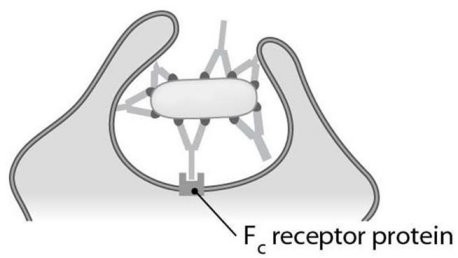 The antibody function known as (agglutination/neutralization/opsonization) is illustrated in Figure 16.3.
The antibody function known as (agglutination/neutralization/opsonization) is illustrated in Figure 16.3.
Fill in the blank(s) with the appropriate word(s).
opsonization
You might also like to view...
What would happen to protons that reenter the mitochondrial matrix?
a. They are attached to NAD+ and FAD. b. They combine with oxygen to form water. c. They synthesize ATP by substrate-level phosphorylation. d. They help in the production of CO2. e. They regenerate Coenzyme A.
Introduction of previously nonexistent genes into a
population may be accomplished by a. nonrandom mating. b. mutation. c. sexual recombination. d. the founder effect. e. changes in chromosome structure.
How long does it take for the daughter cells from one round of replication to replicate themselves?
a. 20 minutes b. No time is required -- they are ready to divide immediately after DNA replication and separation of the daughter cells is complete if conditions are right. c. After the cells have matured fully. d. No time is needed -- the daughter cells cannot replicate further.
Assuming a cell can use glucose as an energy source in fermentation, aerobic or anaerobic respiration. Which of these processes will provide the most ATP to the cell?
a) fermentation b) aerobic respiration c) anaerobic respiration d) they all provide the same amount of ATP to the cell